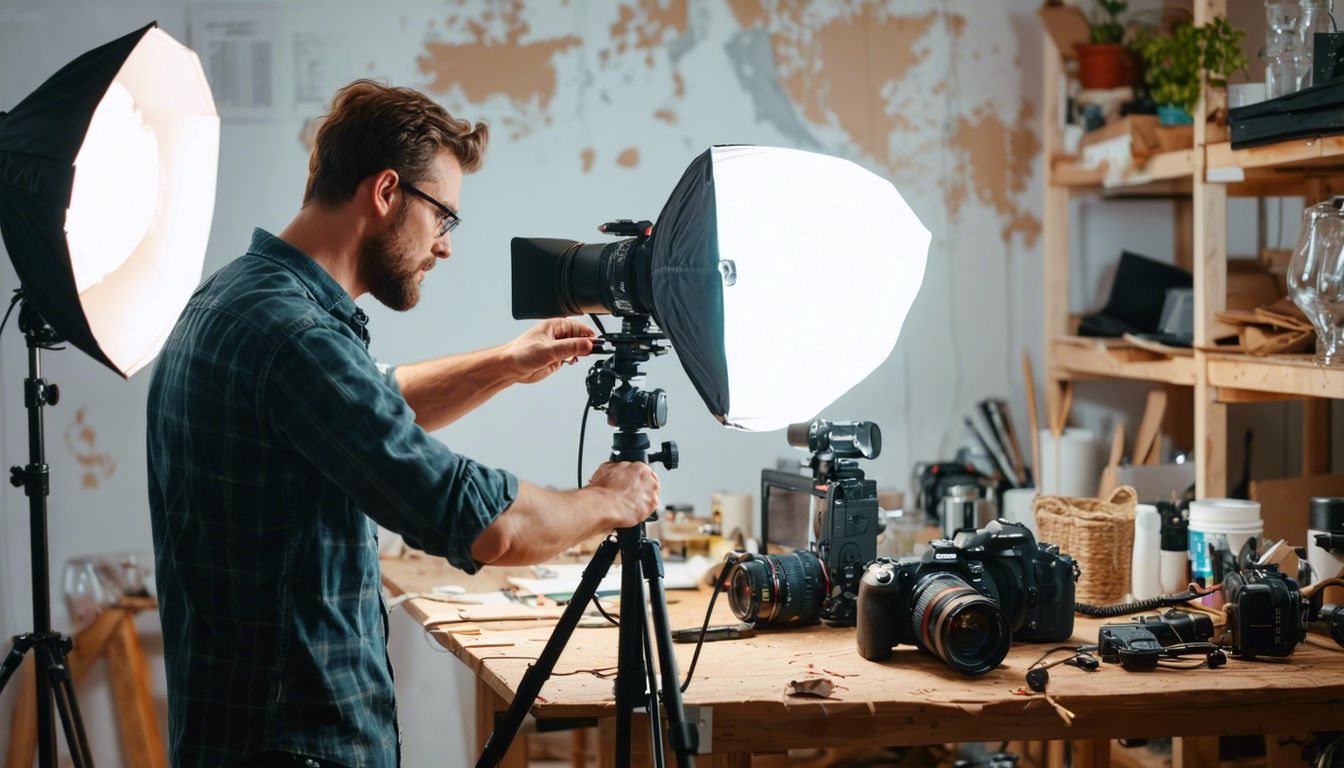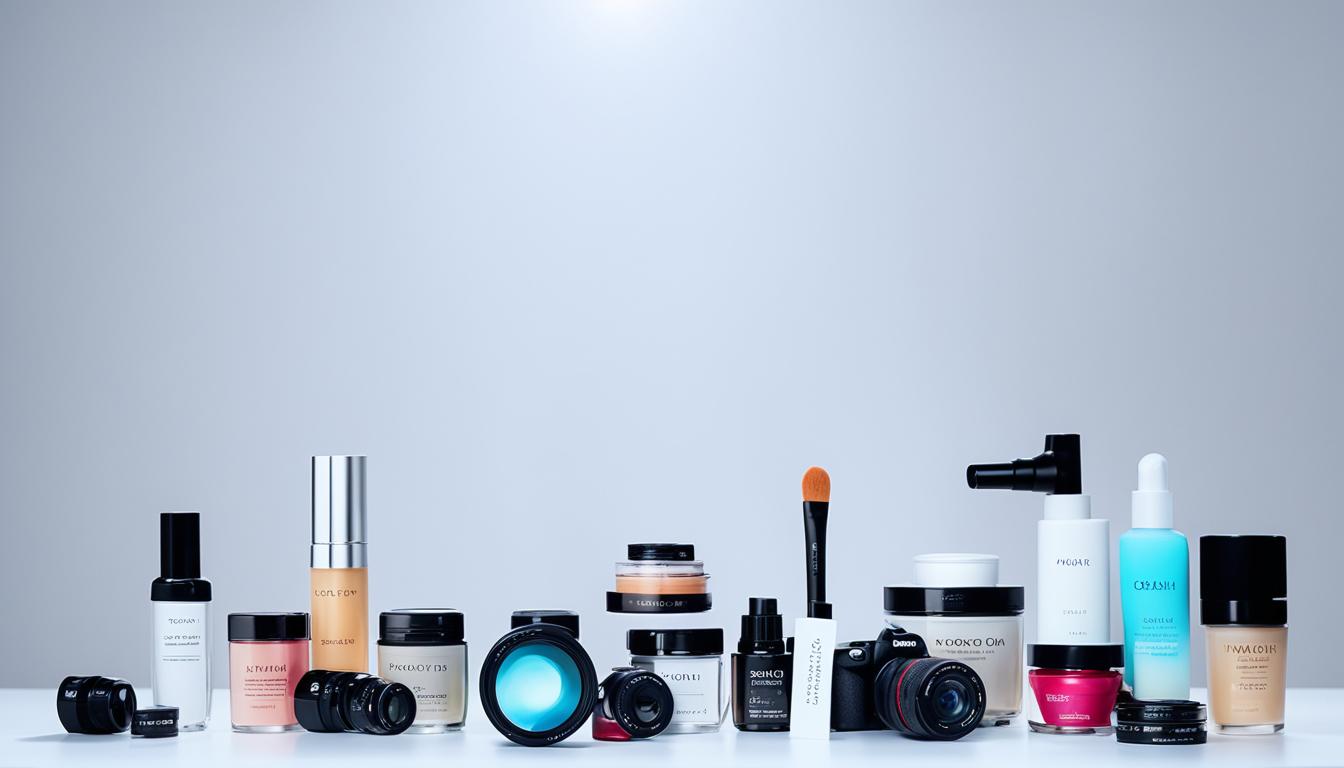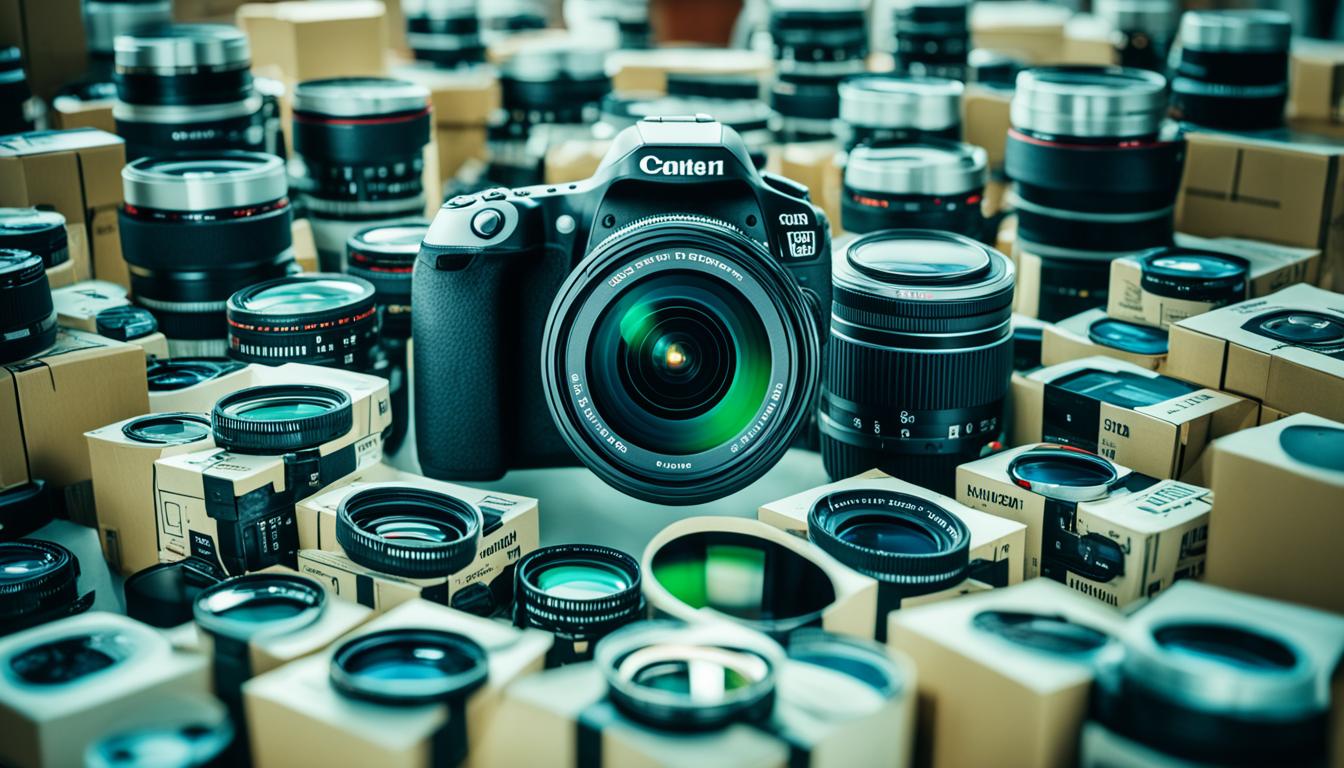Welcome to our comprehensive guide on pricing and marketing strategies for your product photography business. As professional photographers ourselves, we understand the importance of showcasing products effectively to attract customers and build a strong brand. In this article, we will provide you with valuable tips and insights to help you navigate the world of product photography pricing and marketing.
Key Takeaways
- Thorough planning is crucial before hiring a product photographer
- Mixing different styles of product photography can cater to different selling platforms
- Utilizing user-generated photography builds trust with potential customers
- Consistency in backgrounds, lighting, and scales is key to maintaining a professional look
- Editing and optimizing images for SEO can enhance marketing efforts
The Importance of Proper Pricing in Product Photography
Pricing is a crucial decision for any business, including product photography. Accurate pricing ensures maximum profitability and covers the expenses and effort involved. It is essential to determine the right pricing to attract quality customers and drive sales. In this section, we will explore pricing guidelines, factors affecting product photography pricing, and competitive pricing strategies to help you set accurate pricing for your product photography services.
Pricing Guidelines
When determining product photography pricing, it’s important to consider various factors that influence the cost and value of your services. Here are some guidelines to help you establish fair and competitive pricing:
- Evaluate your experience and skill level: Charging rates in line with your expertise and experience level ensures that you are appropriately compensated for your services.
- Consider your brand reputation: A strong brand reputation can justify higher pricing as clients are more willing to invest in quality services.
- Assess the quality of your services: If you deliver exceptional results that stand out from the competition, you can command premium pricing.
- Take into account the number of images: Charging based on the number of images allows you to provide flexibility for clients with different needs.
- Factor in your location: The cost of living and economic factors in your region may impact the pricing structure of your product photography services.
- Account for the type of product being photographed: Different products require varying levels of complexity and expertise, which can affect pricing.
Factors Affecting Product Photography Pricing
Several factors can influence product photography pricing, and it’s essential to be aware of these when setting your rates:
- Experience and expertise: More experienced photographers with specialized skills often command higher prices.
- Demand and competition: Market conditions and the level of competition in your area can impact the pricing landscape.
- Client budget and expectations: Understanding your clients’ budgetary constraints and expectations helps you tailor your pricing accordingly.
- Add-on services and packages: Offering additional services and packages can provide clients with options and influence pricing.
- Equipment and technology: The cost of maintaining and upgrading photography equipment and software can factor into pricing.
Competitive Pricing Strategies
To ensure your pricing remains competitive in the market, consider implementing the following strategies:
- Research competitor pricing: Analyze the pricing of other product photographers in your area to gauge the market standards.
- Create pricing packages: Offering different pricing packages tailored to the varying needs of your clients can help attract a wider customer base.
- Provide transparent pricing information: Clearly outline your pricing structure on your website or in your marketing materials to build trust with potential clients.
- Highlight your unique value proposition: Emphasize the distinctive aspects of your services that set you apart from competitors to justify your pricing.
By carefully considering pricing guidelines, understanding the factors that influence product photography pricing, and implementing competitive pricing strategies, you can establish accurate pricing that reflects the value of your services and ensures long-term business success.
Types of Photography Services for Product Photography
When it comes to professional product photography services, there are several options to consider. Whether you’re a small business or a creative agency, choosing the right type of photographer can greatly impact the success of your product photography endeavors. In this section, we’ll explore the pros and cons of hiring local or freelance photographers versus opting for full-service photography studios.
Local or Freelance Photographers
One option is to hire local or freelance photographers who offer their services on a project basis. This can be advantageous for businesses looking for close proximity and the opportunity to negotiate prices. Local photographers are often familiar with the area and can provide valuable insight into capturing the essence and spirit of your products.
However, it’s crucial to consider the limitations of local or freelance photographers. They may have limited availability due to their other ongoing commitments, and their expertise may extend beyond product photography. This can result in potential delays and less focused attention on your specific needs. Additionally, the cost may vary depending on the individual photographer’s experience and skill level.
Full-Service Photography Studios
Alternatively, full-service photography studios offer comprehensive solutions for all your product photography needs. These studios specialize in product photography and cater specifically to businesses looking to showcase their products professionally and effectively.
Full-service studios provide numerous advantages, including easy scheduling, quick turnaround times, and the ability to handle any size or quantity of products. They often offer a wide range of props and add-ons to enhance the visual appeal of your images, allowing you to create captivating product presentations. Additionally, full-service studios are equipped with professional lighting setups and editing tools, ensuring high-quality results that align with your brand image. Overall, these studios provide a convenient and reliable option for businesses seeking a hassle-free product photography experience.
Pros and Cons of Hiring Local or Freelance Photographers vs. Full-Service Studios
| Hiring Option | Pros | Cons |
|---|---|---|
| Local or Freelance Photographers |
|
|
| Full-Service Studios |
|
|
When deciding between local or freelance photographers and full-service studios, it’s important to weigh the pros and cons based on your specific needs and budget. Consider factors such as availability, expertise, convenience, and the level of customization required for your product photography projects.
How Much Should You Pay for Professional Product Photography?
Determining the exact amount to pay for professional product photography can be challenging due to various pricing models and factors influencing pricing. When budgeting for product photography services, it’s important to consider the different pricing models available and the additional costs that may be involved.
Pricing Models for Product Photography
In the product photography industry, there are three common pricing models that photographers use to determine their fees: per photo, per hour, and per product.
Per photo pricing: This model involves charging a specific fee for each image captured. The cost per photo can vary depending on factors such as the number of images required and whether basic editing is included.
Per hour pricing: With this model, photographers charge an hourly rate for their services. This rate encompasses not only the time spent shooting the products but also any additional editing time that may be required. It’s important to clarify with the photographer whether editing time is included in the hourly rate or charged separately.
Per product pricing: This model allows for flexibility, as photographers charge a set fee for each individual product they photograph. However, per product pricing may have limitations, especially if you have a large number of products that need to be photographed.
Additional Costs
In addition to the base pricing, there may be additional costs associated with professional product photography services. Some common additional costs to consider include:
- Shipping: If you need to send your products to the photographer’s studio, there may be shipping costs involved.
- Usage rights: Depending on your agreement with the photographer, there may be additional fees for using the images in certain ways, such as for advertising or commercial purposes.
- Specialized equipment rentals: If your product requires specific equipment, such as specialized lighting or props, there may be rental fees associated with those items.
Factors Impacting Pricing
Several factors can influence the pricing of product photography services. These factors include:
- Experience and expertise: Photographers with more experience and specialized expertise in product photography may charge higher fees.
- Brand reputation: Well-known photographers or studios with a strong reputation may have higher pricing due to their established brand value.
- Quality of services: Higher-end photography services with exceptional quality and attention to detail may come at a premium price.
- Location: The location of the photographer can impact pricing, as photographers in major cities or high-demand areas may charge more.
- Product complexity: The complexity of the products being photographed, such as intricate details or challenging lighting conditions, may require additional expertise and time, which can affect pricing.
By considering these different pricing models, additional costs, and factors impacting pricing, you can make an informed decision about how much to invest in professional product photography services. It’s important to strike a balance between quality and affordability to ensure you receive high-quality images that effectively showcase your products and enhance your marketing efforts.
| Pricing Model | Description |
|---|---|
| Per Photo Pricing | Charging a specific fee for each image captured, usually includes basic editing. |
| Per Hour Pricing | Charging an hourly rate for services, includes shooting and editing time. |
| Per Product Pricing | Setting a fixed fee for each product photographed, offering flexibility but may have limitations. |

Conclusion
Effective pricing and marketing strategies are essential for success in the product photography business. By thoroughly planning and incorporating various techniques, photographers can boost their business and achieve their desired goals.
When it comes to marketing, it’s important to mix different styles of product photography to cater to various selling platforms. Using user-generated photography can help build trust with potential customers. Consistency in backgrounds, lighting, and scales is key to maintaining a professional look. Additionally, optimizing images for SEO can enhance their impact on marketing efforts.
Proper pricing is equally important in product photography. Understanding factors such as experience, skill level, and brand reputation is crucial in determining the right pricing for your services. It’s also important to choose the right type of photography services that align with your business goals and budget. Whether hiring local or freelance photographers or opting for full-service studios, each option has its advantages and considerations.
By investing in professional product photography and implementing effective marketing techniques, businesses can showcase their products, build trust with customers, and achieve success in the competitive marketplace. With thorough planning, strategic pricing, and targeted marketing efforts, photographers can maximize profitability and create a flourishing product photography business.
FAQ
What factors should I consider when pricing my product photography services?
When determining your pricing, take into account factors such as your experience, skill level, brand reputation, the quality of your services, the number of images required, your location, and the complexity of the products you’ll be photographing. These factors will help you establish a fair and competitive pricing structure.
What are the different options for professional product photography services?
There are several options to consider when seeking professional product photography services. You can hire a local or freelance photographer, which offers the advantage of close proximity and potential price negotiation. Alternatively, you can choose a full-service photography studio that provides conveniences like easy scheduling, quick turnaround times, and a range of props and add-ons. These studios are geared specifically towards product photography and can be cost-effective compared to independent photographers.
What are some common pricing models for product photography services?
The most common pricing models for product photography services include per photo, per hour, and per product. Per photo pricing can vary depending on the number of images required and usually includes basic editing. Per hour or per day pricing may be charged on top of other costs like editing time. Per product pricing allows for flexibility but may have limitations. It’s important to consider which pricing model aligns best with your business goals and the expectations of your clients.
What additional costs should I account for when pricing my product photography services?
Additional costs for product photography services can include shipping, usage rights, and specialized equipment rentals. These expenses, along with the time and effort involved in editing and optimizing images for marketing purposes, should be factored into your pricing structure to ensure you are adequately compensated for your services.
What are some effective pricing and marketing tips for scaling up a product photography business?
When looking to scale up product photography business, it’s important to consider the pricing strategies. Offering package deals or bulk discounts can attract more clients. In terms of marketing, utilizing social media platforms and online advertising can help reach a wider audience and generate more leads for scale up product photography.




